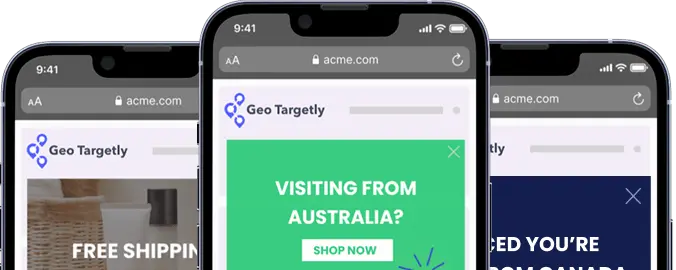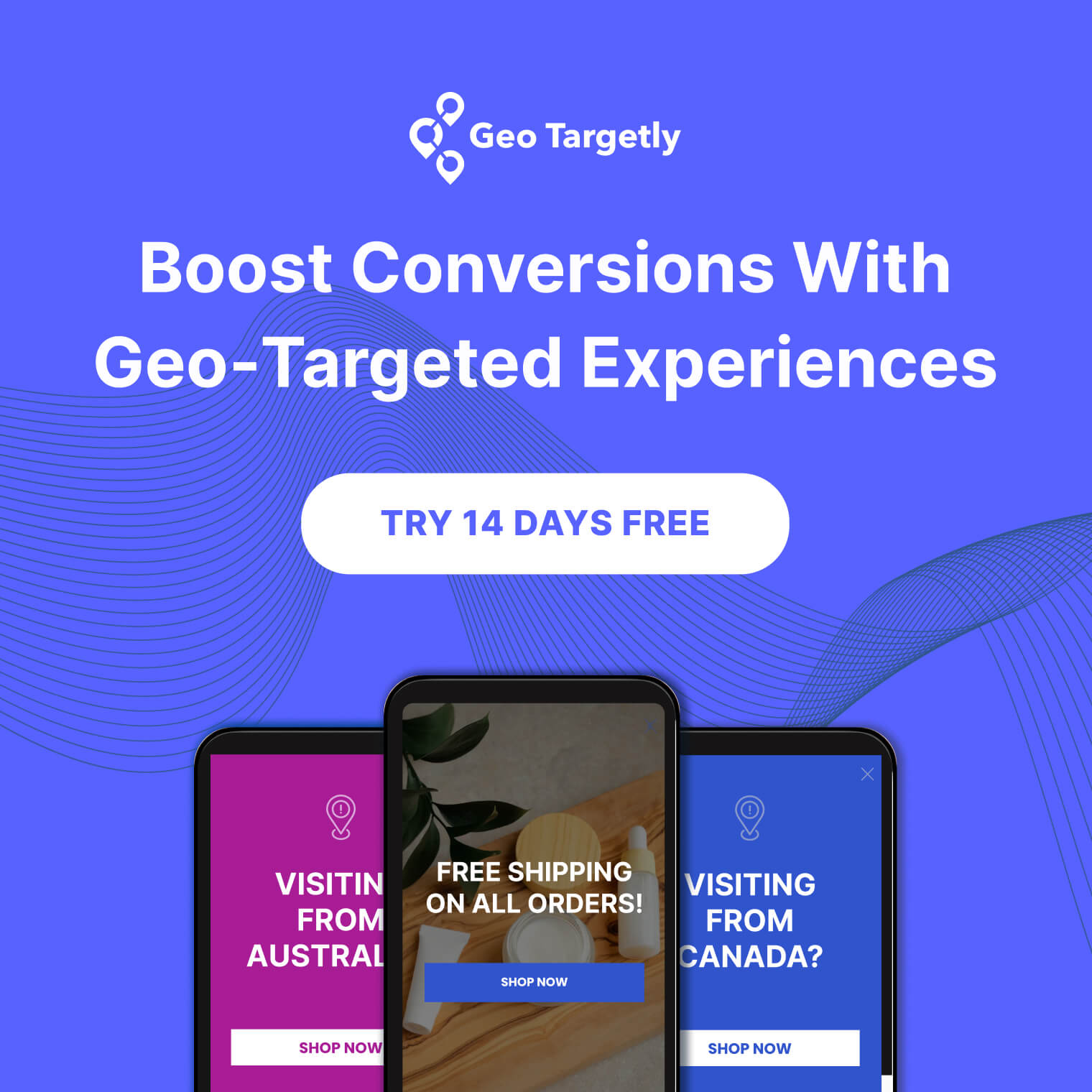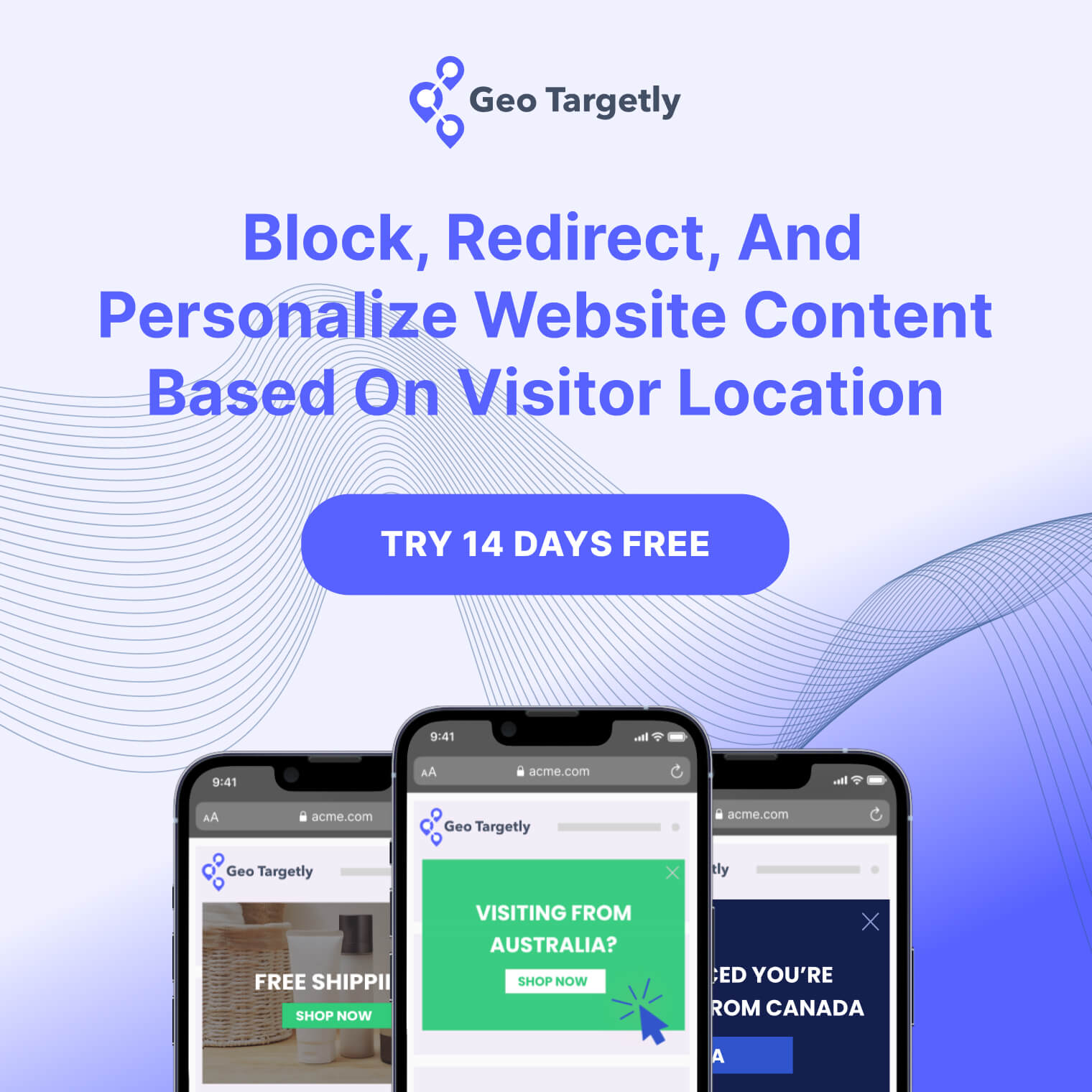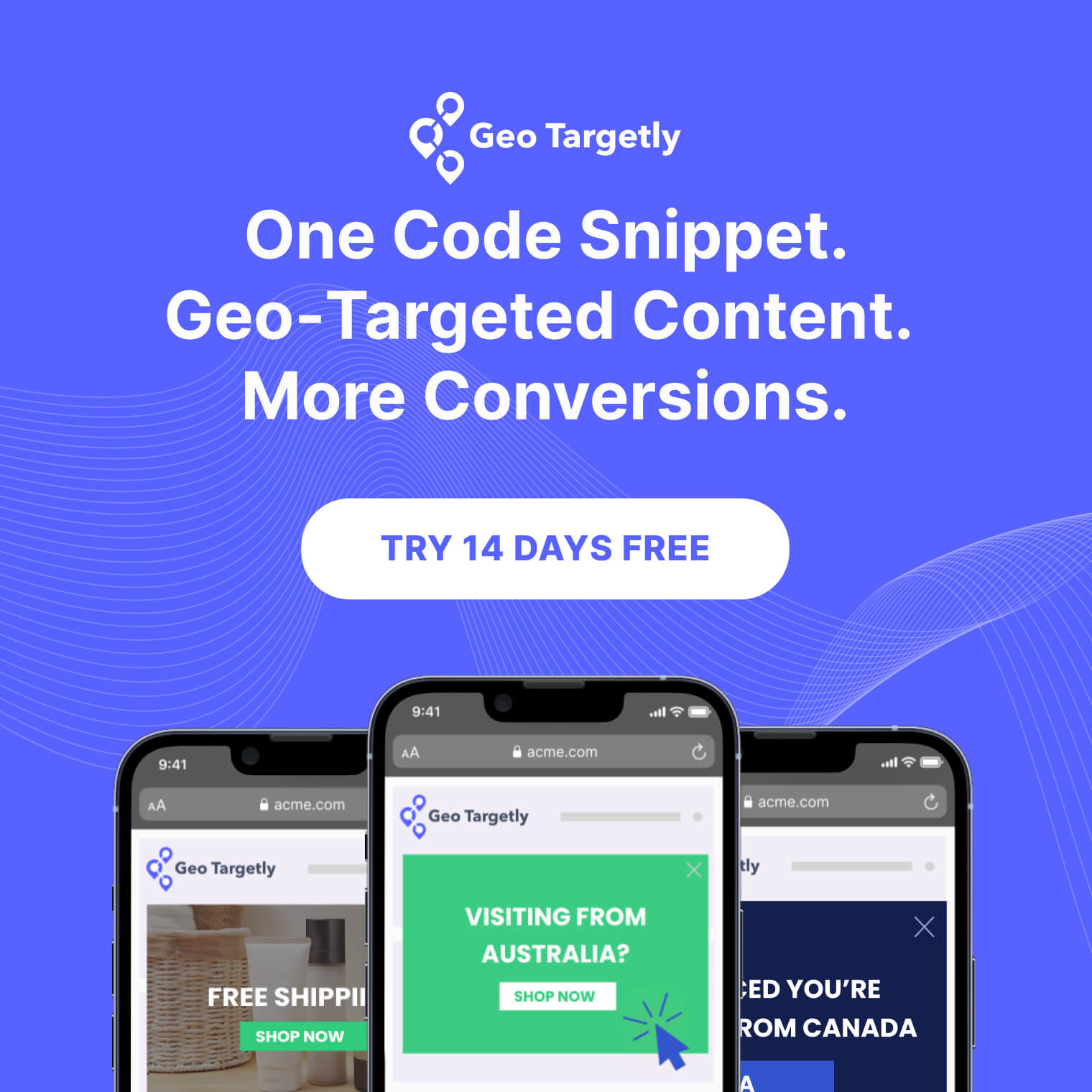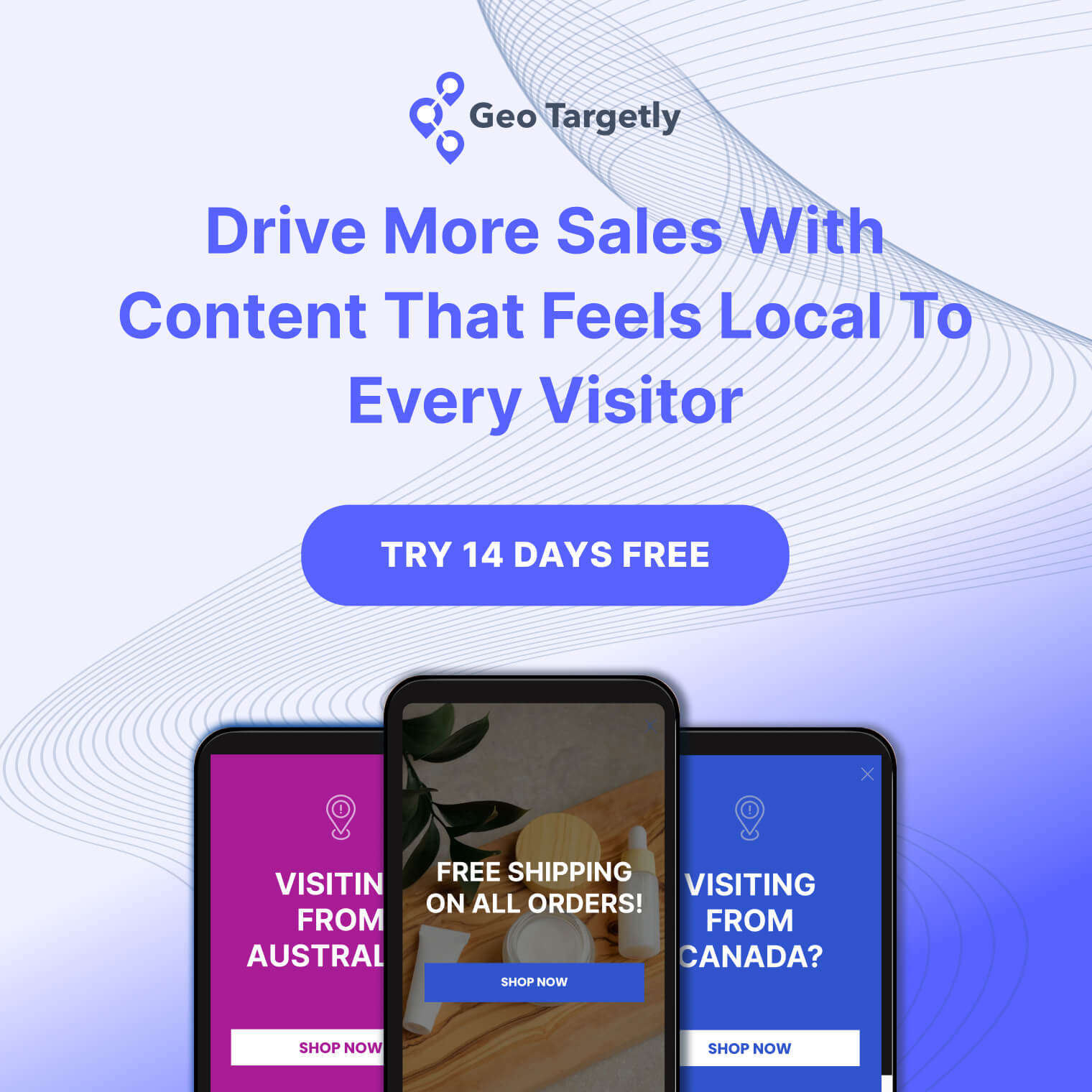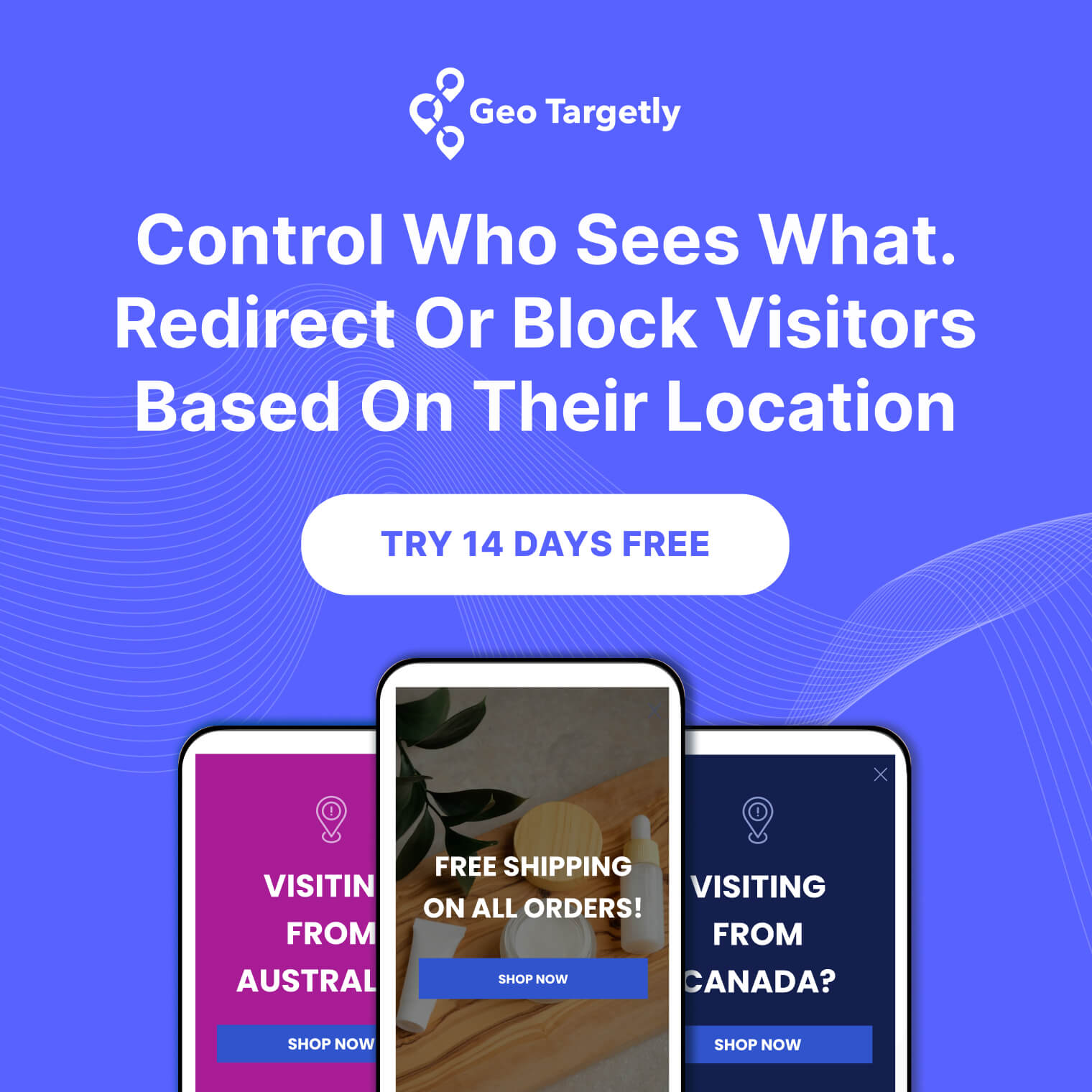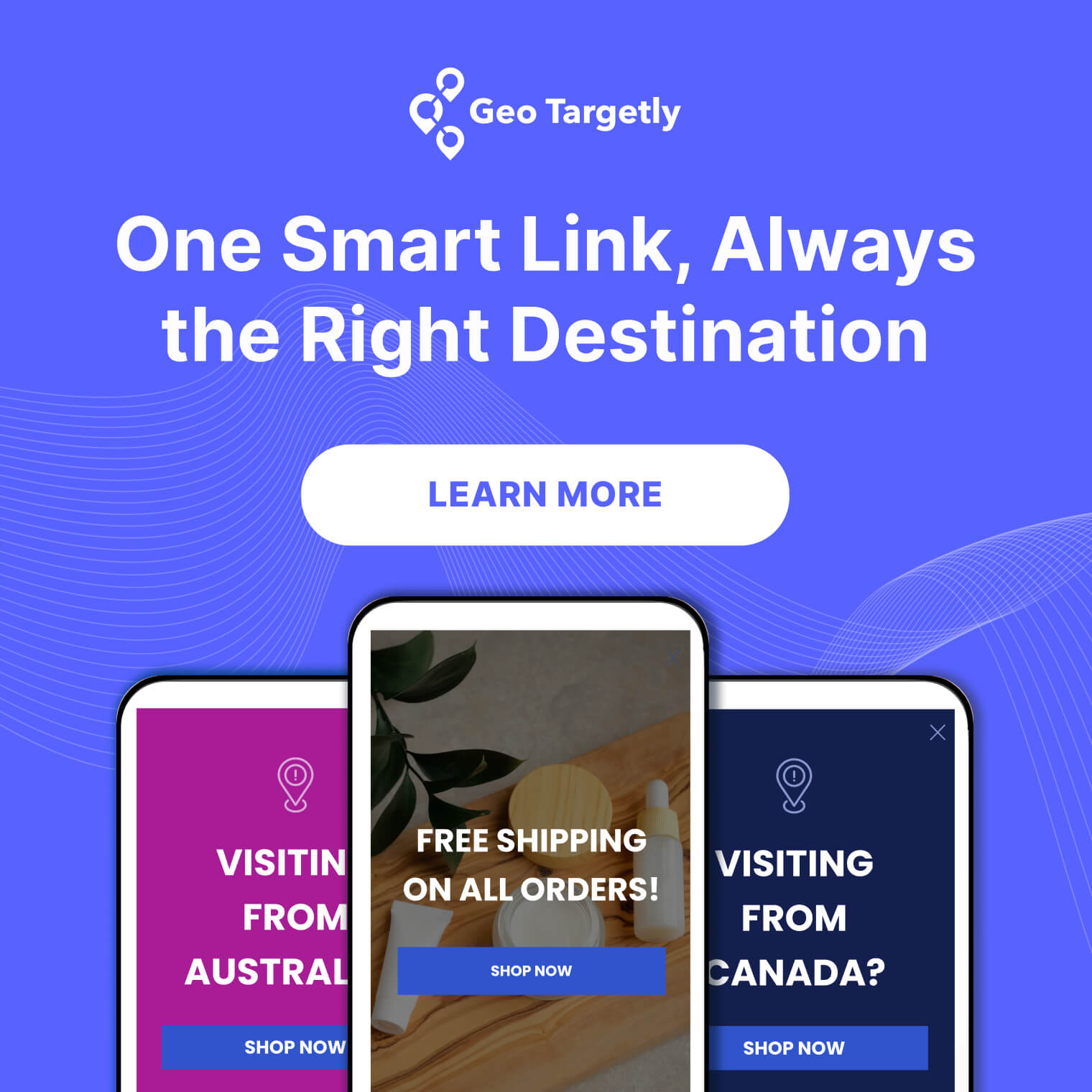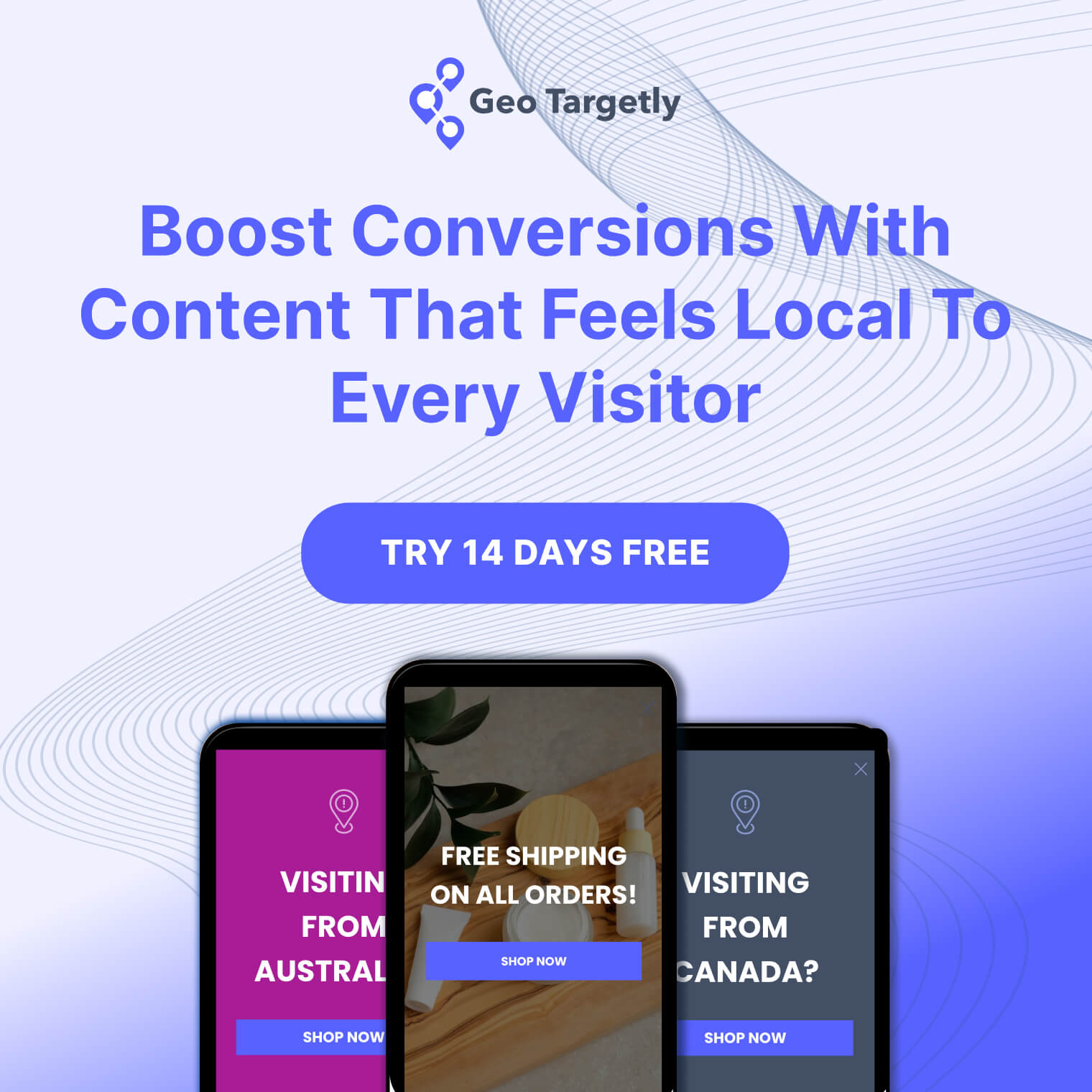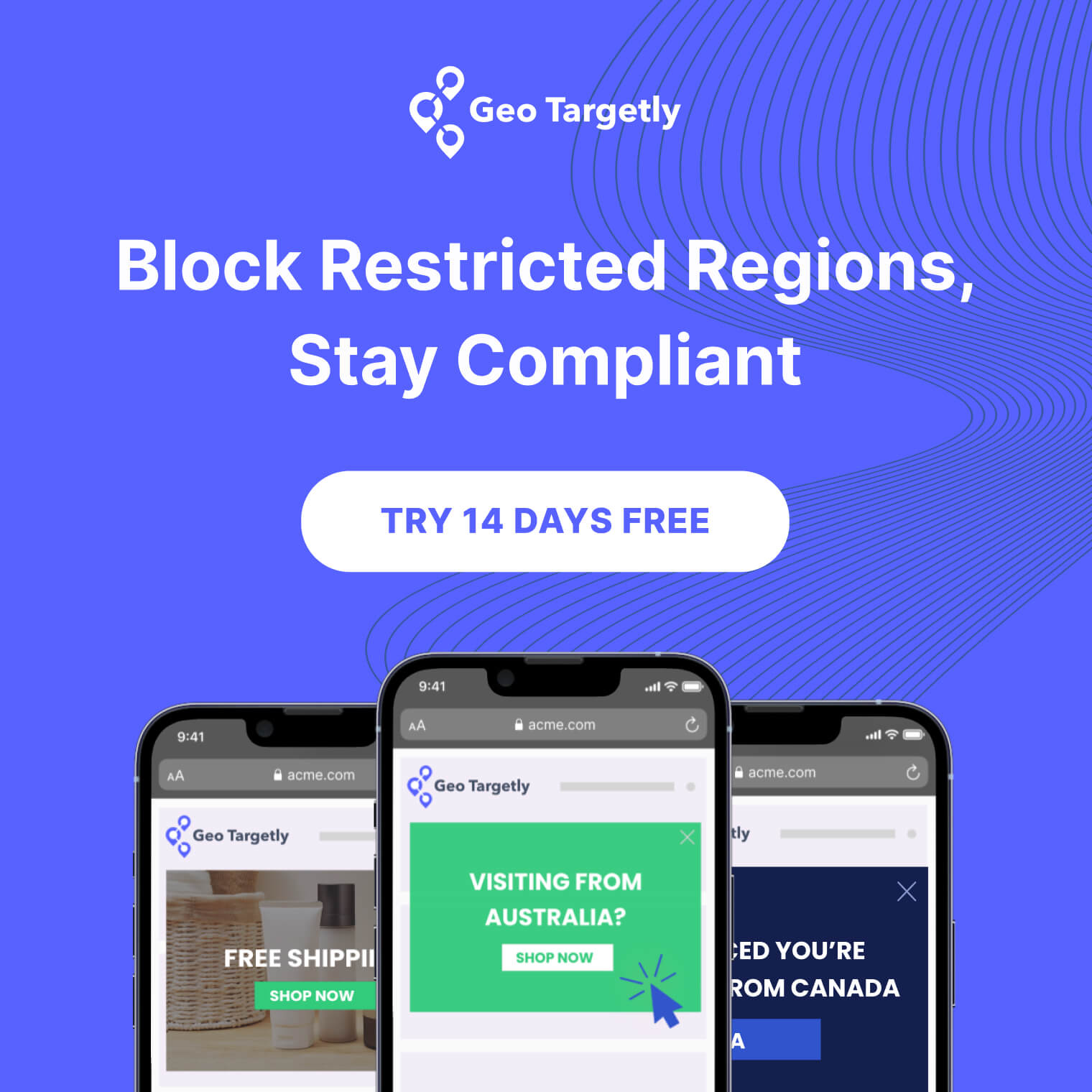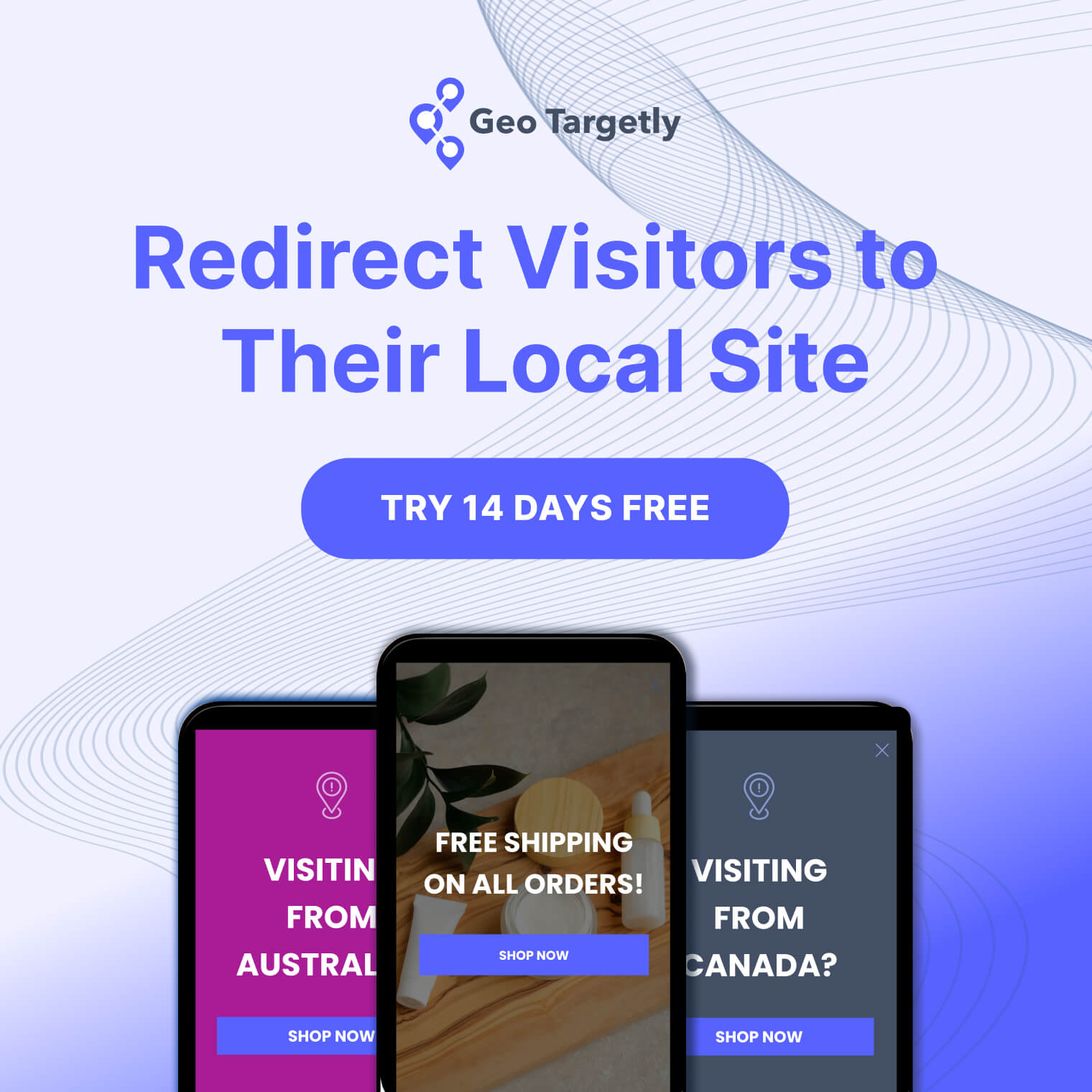

Welcome to the insightful world of geotargeting advertising! This strategy is a cornerstone in modern marketing, enabling businesses to connect with their audience in a more meaningful way through location-based targeting.
In this guide, we'll explore how geotargeting can refine your marketing strategies and why it’s become a beloved tool for digital marketers.
What Is Geotargeting & Geotargeted Advertising?
Geotargeting is a digital advertising strategy that focuses on delivering content or advertisements to a specific audience based on their geographic location.
It's a technique that allows you to specialize your marketing efforts to audiences in specific areas. This could range from broad regions like countries or cities, cities to more targeted locations such as neighborhoods or even specific streets.
Geotargeting is essentially about making it so your marketing message reaches the right people in the right place, which heavily impacts the relevance and success of your campaigns.
The benefits of geotargeting advertising
Now, let's pivot to the perks. Why is geotargeting advertising so beneficial for your business?
Here's the thing: it's all about relevance and precision. When you target your audience based on their location, your message isn't just another ad – it's a relevant piece of communication that actually matters to your audience.
Let's break down these advantages:
- Higher relevance: Your ads hit home because they're crafted for local interests and needs. It’s like speaking directly to your audience, in a way they understand and appreciate.
- Increased engagement: When folks see ads that scream relevance to their current spot in the world, they're way more likely to take notice and act.
- Cost-efficiency: Why cast a wide net when you can fish in the best spots? By zooming in on key areas, you're spending smarter, not just more.
- Detailed analytics: Geotargeting isn't just about sending out ads; it's about gathering intel. You get insights into user behavior and preferences based on location, helping you refine your approach.
- Local flair: It allows you to tailor your messages, making them not just ads, but a part of the local scene. This approach allows your ads to be locally relevant and resonant.
- Improved ROI: Let’s face it, returns matter. With geotargeting, you’re more likely to see a positive response, as your audience finds real value in what you’re offering.
If you want to take it a step further, with Geo Popups you can even customize the website the ads are leading to.
How does geotargeting work?
You've seen the why, now let's explore the how. Geotargeting might seem like marketing wizardry, but it's actually grounded in clever and sophisticated technology.
Here's a breakdown of how geotargeting zeroes in on location to make your marketing more effective:
1. IP address geolocation
One common method is to identify a user's location based on their IP address. Geolocation databases map IP addresses to geographic coordinates, allowing advertisers to target users in specific areas.
It's a bit like using a postal code to send a letter, but instead, you're sending your ad to the right digital neighborhood.
TIP: You can try this with our free tool and see your IP address geolocation!
2. GPS and mobile data
Mobile apps and websites can request access to location data with user consent, enabling geotargeted advertising on mobile platforms.
This is all about precision. Mobile devices with GPS can provide highly accurate location data, perfect for reaching people on the go.
3. Wi-Fi signals
These aren't just for connecting to the Internet; Wi-Fi networks can also be used for geotargeting. When a device connects to a Wi-Fi network, its approximate location can be determined, providing another avenue for targeting.
4. Geographic keywords
Ever searched for something "near me"? That's geographic keyword targeting in action. It uses your search terms to figure out what local content to show you.
5. Geofencing
Geofencing involves creating virtual boundaries around specific geographic areas. It's like drawing a circle around the area you want to target. Geofencing creates a digital perimeter, and when users step into this zone, they receive targeted ads relevant to their location.
Geofencing vs. Geotargeting
Geofencing and geotargeting are powerful tools in location-based marketing, each with unique applications.
Geofencing involves setting up a virtual perimeter around a location. For example, a retail store can send push notifications with special offers to customers' smartphones as they enter the geofenced area.
- EXAMPLE: Event organizers can use geofencing to enhance attendees’ experience by providing real-time updates and exclusive content when attendees are on-site. And Uber leverages geofencing to match riders with drivers in specific high-demand zones, improving service efficiency.
Geotargeting customizes content based on a user's broader location, like their city or neighborhood. Online retailers display different products and prices depending on the user's location to account for regional trends and economic factors.
- EXAMPLE: Starbucks uses geotargeting to promote regional menu items and offers tailored to local tastes and events. And weather apps deliver location-specific alerts and advertisements, ensuring users receive relevant updates and promotions based on their exact area.
Both strategies improve user engagement and drive higher conversion rates by delivering highly relevant and timely content. For the most effective campaigns, combining geofencing's precision with geotargeting's broad reach can offer a comprehensive approach to location-based advertising.
How does geotargeting advertising work?
After understanding how geotargeting works, let's focus on the 'who' – your audience. Precision is key in geotargeting, and knowing your audience is like having a well-calibrated compass in the world of digital marketing. Here’s how you can use audience targeting to ensure your message not only lands but sticks:
1. Audience segmentation
One of the key aspects of geotargeting advertising is segmenting the audience based on their geographic location. Businesses can define specific regions or areas they want to target, ensuring their ads are seen by the most relevant audience.
It's about getting specific. Combine location data with demographic information like age, gender, or interests. This way, your ads aren't just in the right place, they're in front of the right eyes.
2. Tailored content
To maximize the effectiveness of geotargeted ads, businesses often customize the content to suit the preferences and needs of the local audience. This can include using location-specific language, references to local events, and even personalized offers.
Every region has its unique pulse. By analyzing user behavior in specific areas, you can tailor your approach. Are beach accessories trending in coastal areas? Time to push your beachwear line there.
3. Precise ad placement
Geotargeting allows businesses to choose precisely which regions (countries, cities, or even streets) their ads will appear in. For example, a restaurant can make sure its ads are shown to users within a certain radius of their location, increasing the likelihood of attracting nearby customers.
Imagine walking into a store where everything is arranged just for you. That's what personalized announcements do. They make each user feel like the ad is speaking directly to them, based on their local preferences and needs.
A guide to geotargeting advertising
Geotargeting in advertising might seem like a lot to wrap your head around at first. Here’s a short and sweet guide that will give you the necessary foundation you need to start out on your own geoadvertising journey.
Local results
In geotargeted advertising, 'local results' are the specific impacts or responses that arise in the geographical areas you've targeted with your campaign. The main focus is fine-tuning your ad content to align with the unique tastes, behaviors, and characteristics of people in these localities.
The goal here is to boost relevance and engagement.
By crafting ads that truly speak to the local demographic, embracing their cultural nuances, and tapping into consumer trends unique to each area, you're not just reaching an audience, you're engaging with a community.
Geotargeted advertising can be particularly effective for businesses seeking to strengthen their presence in particular regional markets or communities, here’s how.
Increased foot traffic
When you target users in proximity to your physical storefront, you can drive more foot traffic to your business. This is especially valuable for brick-and-mortar stores, restaurants, and local service providers.
With 88% of local searches ending in a phone call or physical visit, it’s easy to see that having a localized online presence is vital to increasing visits.
Location-specific promotions
Tailoring your offers to the local audience can boost sales. Geotargeted ads can inform users about exclusive promotions, events, or discounts available at their nearest branch or store.
About 75% of retailers surveyed reported experiencing a sales increase of at least 5% from the use of location-based marketing strategies.
Competitive advantage
Outsmart your competitors by reaching potential customers in your vicinity. Geotargeting allows you to dominate the local market and establish a strong presence.
Real-time updates
Keep your audience informed about real-time changes. For example, a restaurant can use geotargeted ads to announce daily specials or a sudden change in operating hours.
Audience targeting
Geotargeting isn't just about location; it's also about understanding your audience. Here's how to make the most of audience targeting:
Demographic segmentation
Combine location data with demographic information to create highly targeted ads. For example, a luxury car dealership can focus on affluent neighborhoods.
Behavioral insights
Analyze user behavior within specific regions. Are certain products more popular in one area? Use this data to refine your marketing strategies.
Personalized recommendations
Recommend products or services based on local preferences. For instance, an e-commerce platform can suggest outdoor gear to users in mountainous regions.
Best geotargeting tools
To succeed in geotargeting advertising, you need the right tools. Here are the top 5 geotargeting tools:
These tools, when used effectively, can supercharge your geotargeting advertising efforts.
What to avoid when doing geotargeted advertising
While geotargeting can be highly effective, there are pitfalls to avoid to ensure a successful campaign:
- Overgeneralization: Avoid targeting too broad an area to prevent diluting the impact of your ads.
- Cultural ignorance: Misunderstanding local culture and preferences can lead to ineffective or even counterproductive campaigns.
- Mobile optimization neglect: Many geotargeted ads are viewed on mobile devices; ensure your ads and website are mobile-friendly.
- Lack of testing and adaptation: Continuously test and refine your strategies based on analytics and feedback.
- Inadequate analytics usage: Properly analyze data to understand the effectiveness of your campaigns and make informed adjustments.
Avoiding these common mistakes can greatly enhance the success of your geotargeted advertising efforts.
How to do geotargeted marketing
Geotargeted marketing leverages location data to deliver more personalized content, which is particularly effective in today's mobile-centric world. In the US, for example, 81% of people own a smartphone. By integrating geotargeted marketing, businesses can significantly increase the effectiveness of their campaigns and connect with users directly.
Here’s how to implement a geotargeted marketing campaign effectively:
- Define your target area: Determine the geographic boundaries relevant to your campaign. This could be as broad as a country or as specific as a neighborhood. Precise targeting ensures your message reaches the right audience.
- Choose the right tools: Use geotargeting tools like Google Ads, Facebook Ads, or specialized platforms like Geo Targetly. These tools allow you to set geographic parameters for your ads, making it easier to reach potential customers in specific locations.
- Segment your audience: Break down your audience based on location data. Tailor your messaging to address local interests and regional needs. This personalization can lead to higher engagement and conversion rates.
- Create localized content: Develop ad content that resonates with the local audience. This could include mentioning local landmarks, using regional dialects, or addressing local events and issues. For example, localized offers can attract more foot traffic to physical stores.
- Use location data: Analyze location data to understand customer behavior. Knowing where your potential customers spend their time helps you show the right promotions at the right time.
- Set up geofences: For more precise targeting, create geofences around specific locations such as stores, events, or competitor locations. Trigger ads or notifications when potential customers enter these zones. This method can significantly increase foot traffic and drive sales.
- Monitor and adjust: Continuously monitor the performance of your geotargeted campaigns. Use insights to tweak and optimize your strategy for better results. Adjusting your approach based on real-time data ensures your campaign remains effective and relevant.
Geotargeted marketing can lead to substantial benefits. Research from MarTech Series shows that campaigns using location data see an 83% improvement in effectiveness.
By understanding customer locations and behaviors, marketers can improve engagement and drive both online and foot traffic, ultimately improving customer relationships and boosting business outcomes. Implementing these strategies can help your marketing messages reach the right audience at the right time and maximize the impact of your efforts.
Geotargeted advertising examples
To inspire your geotargeted advertising campaigns, here are some successful real life examples:
Example 1: Starbucks
Starbucks uses geotargeting to promote its seasonal drinks and specials. When users are near a Starbucks location, they receive notifications about nearby stores and ongoing promotions. This resulted in an increased 21% click-through rate compared to previous ad campaigns!
Example 2: Uber
Uber employs geofencing in various locations, such as airports, to inform users about the availability of Uber cars. Details on Uber's geofencing strategy can also be found in the PlotProjects' article on geofencing examples.
Example 3: Burger King
Known for its geo-conquesting campaign where Burger King created geofences around McDonald's restaurants, offering the Whopper for 1 cent to app users within these areas. This reverse-geotargeting campaign was a unique and radical way to drive business away from their competitors, and worked with great success.
Geotargeted advertising for social media
Social media is an excellent avenue for ad campaigns, and luckily, SoMe giants know that. They’ve made it remarkably simple for users and businesses to target their ad campaigns and posts.
Facebook geotargeting
Have you noticed local shops on your news feed? That’s right, Facebook ads allow geotargeting! Here’s how:
- Open Facebook Ads Manager.
- Select 'Store traffic campaigns' as the campaign objective.
- Define the target audience based on location (city, ZIP code), age, and gender.
- Choose distribution media (Facebook, Instagram, Messenger) and devices (mobile, computer).
- Set the budget and duration.
- Design the ad format (photo, video, carousel, etc.).
Instagram geotargeting
Instagram enables geotargeting by allowing users to geotag their posts, making them visible to people in specific locations.
- Create a new Instagram post.
- Tap on "Add Location" to tag the post with a specific location.
- Select or search for the desired location.
- Complete the post with a caption, hashtags, and other details.
- Share the post to target users in that location.
LinkedIn geotargeting
LinkedIn offers geotargeting for campaigns to reach audiences in specific geographic areas, increasing the relevance of the content to local professionals.
- Create a LinkedIn campaign and select your audience.
- In the "Audience" section, click on "Locations" to specify regions, cities, or radius-based locations.
- Use the "Globe" icon to refine targeting by including or excluding specific areas.
- Incorporate relevant location hashtags in your posts for additional visibility.
Is geotargeted marketing effective?
Yes, geotargeted marketing can be incredibly effective when executed correctly. The ability to reach the right audience at the right place and time can lead to higher conversion rates and ROI.
Benefits of geotargeting as a marketing tool
- Personalization: Tailors the customer experience based on location, providing only relevant content.
- Conversion rates: Improves the likelihood of making a purchase decision.
- Targeting accuracy: Uses technology like IP tracking and GPS to serve targeted location-based content.
- Efficiency: Focuses marketing efforts on areas that are likely to generate quality leads.
Challenges and considerations
- Optimization: Precise targeting is necessary to avoid misplaced ads and wasted spending.
- Location relevance: It’s important to make sure that the selected geographic area aligns with the market and business objectives.
- Cultural sensitivity: Ads should consider local languages, currencies, and cultural norms.
Overall, geotargeting is a dynamic and effective approach for marketers seeking more impactful and relevant campaigns. By analyzing performance data and continually refining strategies, businesses can maximize the impact of geotargeted advertising.
Conclusion
Geotargeting advertising is a versatile strategy that can benefit businesses of all sizes. Whether you're a local store looking to boost foot traffic or a global brand aiming for regional relevance, geotargeting offers a powerful solution.
By understanding your audience, using the right tools, and avoiding common pitfalls, you can maximize the impact of your geotargeting campaigns and see your engagement rates soar sky-high.
And since you're already here, what about expanding your geotargeting skills and reaping the full benefits of targeting the right audience?
We offer an all-in-one geotargeting suite.





.webp)



